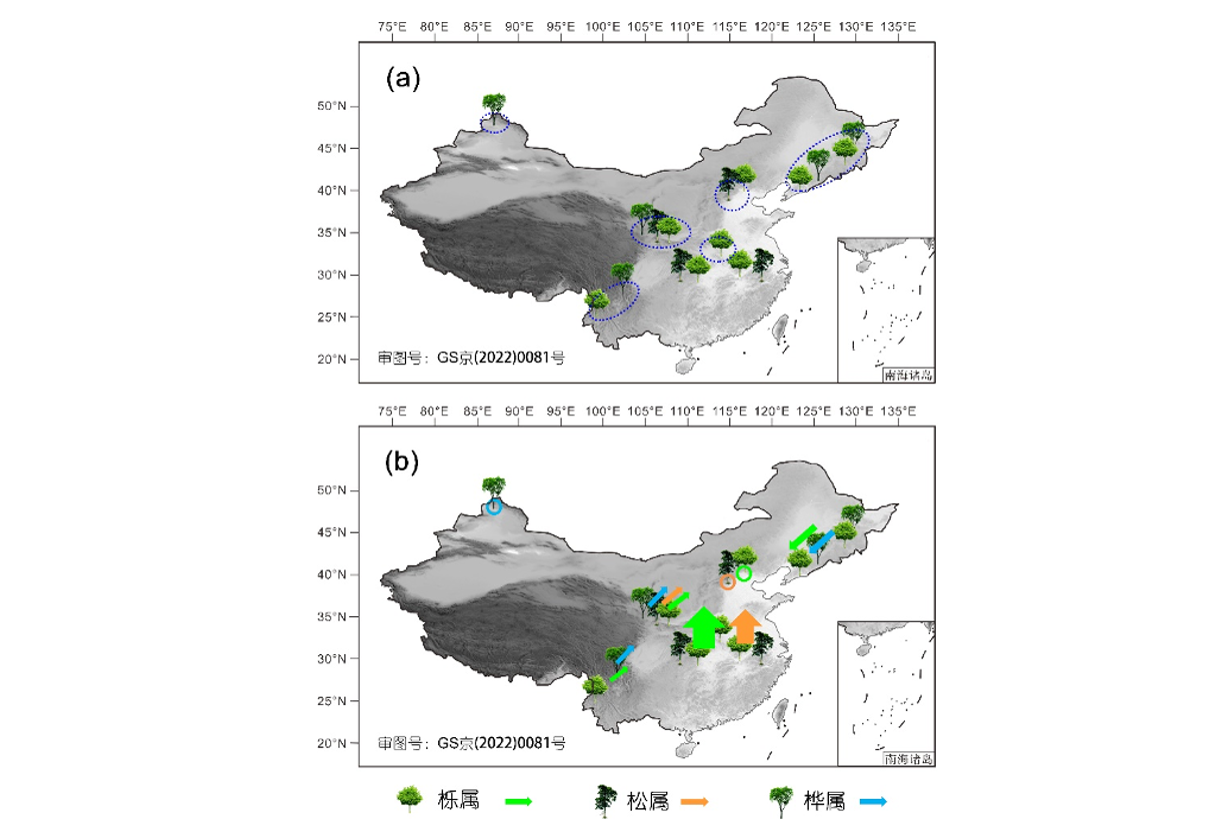Forests account for 30% of the global land area and have important roles in the global water and biogeochemical cycles. Climate change has led to worldwide changes in forest distributions, especially in the mid-latitude regions. As one of the most important forest genera, oak (Quercus) is widely distributed in the Northern Hemisphere. Deciduous oak acts as an important forest constructive species in the mid-latitude regions and has important economic and ecological value. In the future, global warming and drought will continue to increase, and human activities will be intensified. How the oak distributions will respond to climate change and human activities is an unaddressed important issue.
This study integrated different methods (i.e., palaeoecology, phylogeography, and species distribution models) to investigate the likely locations of glacial refugia and the postglacial development of the main deciduous oak species. The results indicated that mountains of northern and central China acted as the refugia during the Last Glacial Maximum (LGM). The present Quercus in northern China could be the result of local dispersal during the postglacial period rather than only that of long-distance migration from south to north. Climate was the main influencing factor for oak migration, while human activities did not show much influence on this widespread genus. The topography acted as a buffer and made the mountains to act as refugia under a deteriorated climate. Compared with other main tree genera (e.g., Pinus and Betula), the refugia locations and migration routes of deciduous oak species were different because of their physiological differences. The individual migration dynamics of these three genera need to be considered when modelling their dynamics.
This work was supported by the National Key Research and Development Program of China (Grant No. 2017YFA0605101).

Figure 1 Conceptual model for the tree genus refugia during the LGM (a) and the migration pattern during the postglacial period (b).
The dark blue circles indicate the main refugia for the three main genera (i.e., Quercus, Pinus and Betula) in (a).
The green, orange and light blue arrows indicate the migration routes, while the small circles indicate those refugia with no apparent dispersal in (b).
Article information:
Hao Q, Liu HY*, Cheng Y, Song ZL*, 2022. The LGM refugia of deciduous oak and distribution development since the LGM in China. SCIENCE CHINA Earth Sciences. (中英文同时发表,on line)
Hao Q, Liu HY*, Yang SL, Yang WH, Song ZL*, 2019. Differentiated roles of mean climate and climate stability on post-glacial birch distributions in northern China. The Holocene, 29(11): 1758-1766.
Hao Q, Guillaume de Lafontaine, Guo DS, Gu HY, Feng Sheng Hu, Han Y, Song ZL, Liu HY*, 2018. The critical role of local refugia in postglacial colonization of Chinese pine: joint inferences from DNA analyses, pollen records, and species distribution modeling. Ecography, 41(4): 592-606.